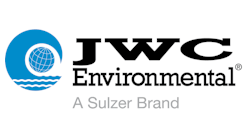Whistler Resort, located in British Columbia, Canada, is the alpine host for the Vancouver 2010 Winter Olympics and Paralympics. While athletes around the world were training, long-planned upgrades to the Whistler Resort’s wastewater treatment plant had been underway to ensure completion in time for the Olympics where Whistler expected thousands of athletes, spectators and media. Whistler also housed more than 6,000 athletes, coaches, trainers, officials and media at its new Athletes Village which, post-games, will be turned into a neighborhood, providing 250 residences, recreational facilities and retail services. Whistler knew it had to go for the gold standard when it came time to replace its outdated wastewater system.
Like other wastewater treatment plants, Whistler Resort Municipality reviewed the need for upgrades as the community grew. Currently, Whistler’s permanent population is 10,000 with 2 million visitors annually. An additional seasonal workforce commutes into Whistler on a daily basis from neighboring communities. Old wastewater treatment equipment required more and more maintenance, making upgrades inevitable. Combined with the anticipated influx of thousands of Olympic guests and the increase of permanent residents at the Athletes Village following the Games, a project to upgrade the waste management system was started well in advance to allow timely completion, testing and startup in time for the 2010 Olympics.
“From an operational standpoint, we wanted a robust, serviceable system with good support behind it,” said Andrew Tucker, Whistler’s wastewater treatment plant supervisor. “There’s nothing worse than having something installed and not being able to troubleshoot problems. We looked at three manufacturers and visited wastewater treatment plants with different systems. People we talked to regarded JWC Environmental as offering good, solid equipment.
“Serviceability was a huge factor in our decision. Comments from other operators indicated how tough it was to get service from some manufacturers, especially on the West Coast. With JWC in California and their B.C. distributor, Elaine Connors of Jelcon Equipment, close by, we felt JWC would be the best choice.”
Whistler selected JWC’s Monster Separation System, which consists of two Finescreen Monsters and two Screenings Washer Monsters installed at the head works. The first system went online December 2008, with the second following in March 2009. The Monster Separation System provides capture of unwanted wastewater debris and efficient washing and compacting, resulting in a discharge that is clean and ready for disposal.
Prior to the upgrade, the separation technology included a coarse screen that removed not only debris, but also fecal matter and biosolids, resulting in more organic material going to the landfill, which in turn caused a highly unpleasant odor.
“The whole idea behind JWC’s fine screen and the Screenings Washer Monsters is that it separates the rags and plastics out so that they can go to the landfill, but returns the soft organic materials to the process where it can be properly treated,” Connors said. “With the JWC system, Whistler gets a cleaner system by using the finer screen and a drier, cleaner separation of what goes to the landfill.”
In addition to a cleaner system, Whistler operators gained a side benefit: with the old system, operators had to rake the screens down in order to keep the hopper clear. With the new system, they no longer have this task.
The final part of the upgrade will be installation of JWC’s Mini Monster into the fermenter and a Muffin Monster for septage receiving. Both grinders will provide added protection to prevent solids from causing damage to downstream pumps and systems.
Source: JWC Environmental


